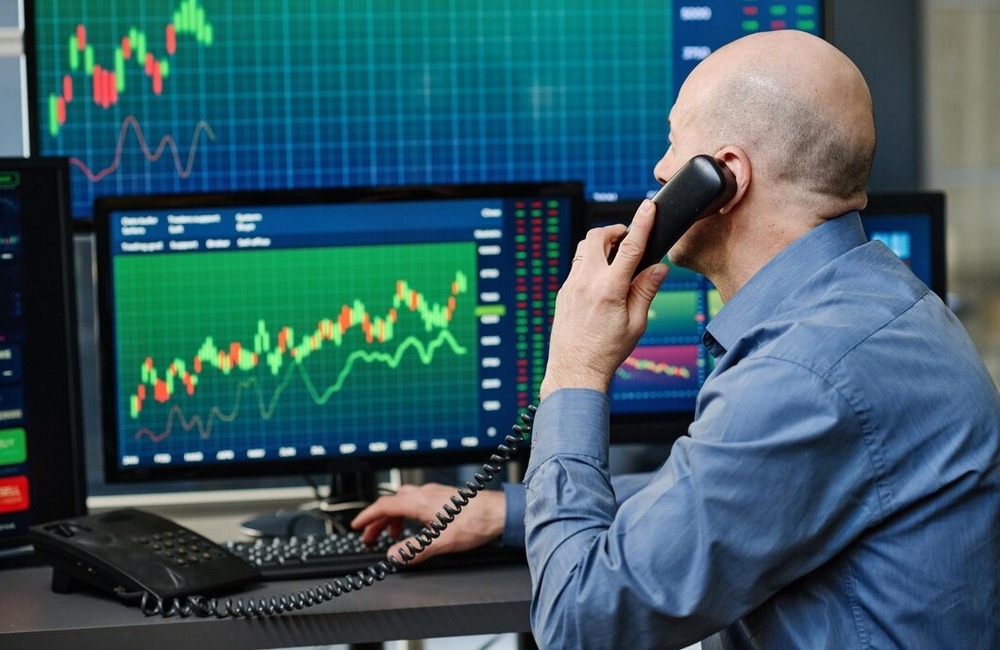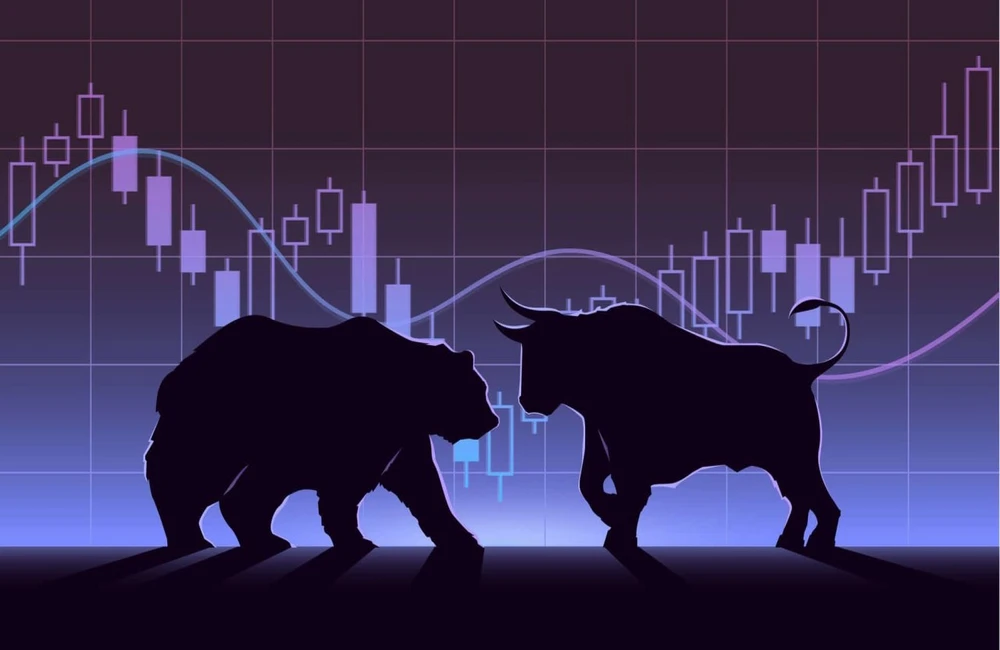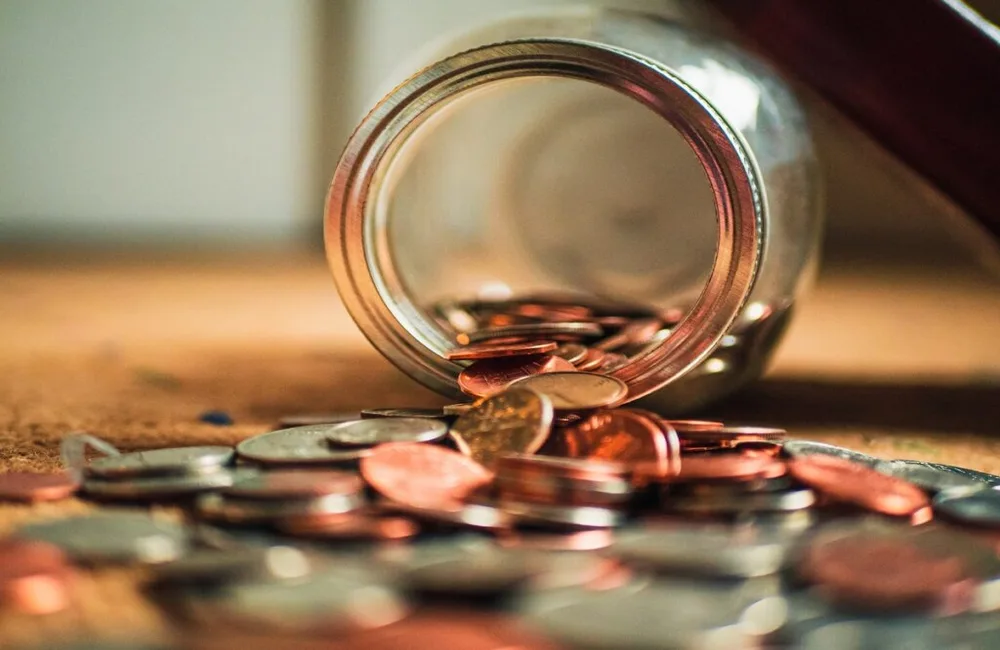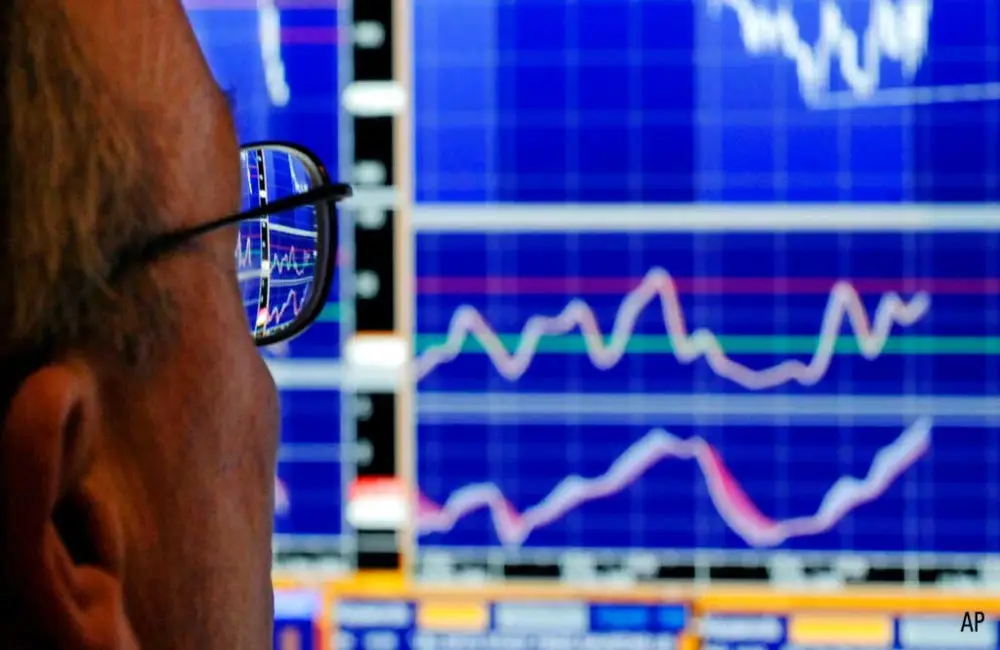ASX futures jumped 52 points, or 0.7 per cent, to 7285 at 8.00 am Thursday, in an indication of a positive recovery after the 0.8pc slump yesterday.
The S&P 500 cut gains of as much as 1.6% in late-afternoon trading on Wednesday to close up 0.2%. The benchmark index dropped 2.8 percent the previous day. The Dow Jones Industrial Average rose 0.2 percent on such trading days. The technology-heavy Nasdaq Composite slipped less than 0.1 percent. After-hours trading is even more favorable for the index, up more than 1% as Meta Platforms leaps on strong user growth, adding close to 20% to its value.
Brisk losses for US stocks in the past week exacerbated this year’s already poor showing. The S&P 500 has fallen 12% and the Nasdaq Composite 20%. The Nasdaq closed at its lowest level since December 2020 on Tuesday, erasing all the gains it made in 2021.
The volatility has come as investors race to price in the effects of increasingly aggressive moves by central banks globally to tame inflation through interest rate hikes and balance sheet reduction. Lockdowns in Chinese manufacturing and commercial centers because of Covid, the impact of Russia’s invasion of Ukraine on commodity prices, and indications of slowing economic growth have also been a drag on equities.
Seema Shah, chief strategist at Principal Global Investors, said she expected the next action in the stock market to turn sideways or down.
Earnings are “supporting the market to some extent, but I don’t think anything here is enough to support it higher,” Ms. Shah said. Her team has shifted to a neutral recommendation on the net of all their equity positions, she said.
“The risks are just building and building,” she said. “There’s no point talking about picking up pennies in front of the steamroller.”
On the local exchange, the S&P/ASX 200 ended 0.8% down at 7261.2, sacrificing a third straight day of losses on shares of tech companies and other businesses sensitive to shaky economic conditions.
With the Nasdaq Composite falling to a 16-month low, the Australian tech sector dropped 2.4%, but losses are 9.0% over four sessions and 25% year to date.
Life360 plummeted 29% following plans for a U.S. listing being scrapped, while Block (NYSE:) fell 5.9%, EML Payments (ASX:) gave up 5.7% and Appen (ASX:) lost 4.3%.
Consumer stocks fell, with banks NAB, Commonwealth, Westpac, and ANZ down between 1.65% and 2.6%. Commodity stocks rebounded, trimming overall losses.
Prices in Australia surged to their highest level ever since the introduction of the Goods and Services Tax in the March quarter, data released on Wednesday showed. The consumer price jump of 5.1% has markets meaning at least one rate hike is now properly on the cards as soon as next week’s Reserve Bank meeting.
In commodity markets iron ore gained for a 1% jump to $US140.45 a tonne; gold futures were down 0.8% at $US1888.70 a barrel; and Brent crude rose 0.2% to $US105.15 a barrel.
The yield on the Australian 2 Year bond touched 2.35% and the 10 Year was off, at 3.05%, in local bonds. Overseas, the US Treasury 2 Year ended at 2.59% and the 10 Year at 2.83%.
The Australian dollar slipped 0.04% to 71.22 US cents, compared to a previous close of 71.25. The Wall Street Journal Dollar Index, which measures the US dollar against 16 other currencies, climbed to 95.21.
Asia
Chinese stocks rebounded from recent weakness on Wednesday after Beijing called for a surge in infrastructure construction to drive growth, boosting machinery and building-material sectors. Anhui Conch Cement was up 4.9%, Inner Mongolia Baotou Steel climbed 5.0%, and Sany Heavy Industry surged 6.9%. Shares also rallied in the renewable-energy industry, with electric-vehicle battery maker CATL, LONGi Green Energy, and Tongwei soaring 7.2%-9.0%.
Kweichow Moutai, a heavyweight on the index, rose 3.6% after reporting a higher 1Q profit.
The Shanghai Composite Index bounced back after a steep selloff in the two previous sessions, gaining 2.5 percent to 2958.28; the Shenzhen Composite Index and the ChiNext Price Index rose 3.9 percent and 5.5 percent, respectively.
Hong Kong shares closed a touch higher as they continued to recover from a selloff Monday when the stock markets in China also took a turn for the better. The benchmark Hang Seng Index inched up 0.1%, to close at 19946.36.
Consumer companies were up, with the sector extending gains after earlier declines amid a resurgence of the pandemic in China. Shares of restaurant operator Haidilao soared 11%, while smartphone maker Xiaomi added 3.1%.
The Nikkei Stock Average fell 1.2% to 26386.63, as concerns mounted over earnings outlooks against the backdrop of rising prices for raw materials and parts. Electronics stocks fell, with Panasonic, Fujitsu, and Olympus down 1.6%, 0.6%, and 4.3%, respectively. Robotics firm Fanuc finished 5.7% down after it posted a drop in its 4Q net profit. Bicycle parts maker Shimano dropped 13% after the company reported lackluster 1Q earnings.
Europe
European markets were mixed with investors cautious of potential pitfalls. The Stoxx Europe 600 gained 0.7 percent, the French CAC 40 added 0.2 percent, and the German DAX traded flat.
“There’s a bit of positivity returning to the markets Wednesday but there remain plenty of underlying jitters after a mixed bag of earnings and growing uncertainty,” says Craig Erlam at Oanda.
“Now, when Russia is turning off gas supplies to Poland and Bulgaria for refusing to pay in roubles and Putin has unilaterally decided to change the payment terms, you can see why.
North America
US stocks crept higher in erratic trading Wednesday, recovering some of their losses after a steep sell-off a day earlier.
It was a day of ups and downs, with the S&P 500 and Dow Jones Industrial Average briefly peaking in the early afternoon before giving up their gains into the close. The Dow industrials moved in a range of about 588 points between their high and low of the day.
The S&P 500 and the Dow Jones Industrial Average added 0.2 percent, respectively. The technology-oriented Nasdaq Composite lost less than 0.1%.
Investors described Tuesday's selloff, when the Nasdaq suffered its largest one-day percentage decline since September 2020, and the Dow plunged more than 800 points, as a temporary relief fair rally after the moves higher. Analysts and money managers have been processing earnings reports, considering concerns about inflation, the possibility of a rapid tightening of policy by the Federal Reserve, and the spread of Covid-19 in China.
“Stocks have been so weak so far this month. I think investors are starting to see some value in the current pricing,” said Tracie McMillion, head of global asset allocation strategy at Wells Fargo Investment Institute.
Major US stock indexes are still down sharply for the year, with the S&P 500 down 12% and the Nasdaq Composite down 20%. The Nasdaq closed at its lowest point on Tuesday since December 2020, erasing all of the gains it made in 2021.
The market is deep into the corporate earnings season. Profits for companies in the S&P 500 are expected to have grown 7.5% in the first quarter compared with a year earlier, according to FactSet.
Seema Shah, chief strategist at Principal Global Investors, said she views the next direction for the stock market as sideways or down.
Earnings are “supporting the market to some extent, but I don’t think that’s enough to support it higher,” Ms. Shah said. She said that her team has shifted to a neutral recommendation on their overall equity stands.
“The risks are just building up,” she said. “We don’t want to pick up pennies in front of the steamroller.”
This week many of those companies are reporting earnings. Shares of Facebook parent company Meta Platforms (FB) jumped 14% in after-hours trading after the company easily beat earnings expectations. Twitter, which this week agreed to sell itself to Elon Musk for $44 billion, is scheduled to report Thursday.
Some 80% of S&P 500 members to report earnings thus far have beaten analysts’ forecasts, according to FactSet data. But Emily Roland, co-chief investment strategist at John Hancock Investment Management, said investors are still dialing in on a variety of broader problems pressing on markets.
“All the market’s really focused on right now is a kaleidoscope of macro concerns, everything from how aggressive the tightening Fed policy will be, to this global growth scare that’s playing out,” she said.
Many of those worries have pushed the dollar to its strongest level in more than two years. The dollar often rises when the global economy sours and when investors predict US growth will outstrip the world’s. Higher US interest rates usually are a boon for the greenback too, drawing yield-chasing investors to the currency.
The WSJ Dollar Index, which measures the currency against a basket of others, climbed to 95.19, headed for its highest close since March 2020.
In the bond market, the yield on the benchmark 10-year US Treasury note climbed to 2.817% on Wednesday, from 2.773% on Tuesday. In recent weeks, investors have sold bonds in anticipation of even higher interest rates, and the yield on the benchmark note has remained near its highest level since 2018. Bond prices and yields move in opposite directions.
Natural-gas prices in Europe jumped 4.1% after Russia said it would cut off gas flows to Poland and Bulgaria in retaliation for their refusal to pay on Moscow’s new terms. Brent crude, the international market for oil prices, climbed 0.3 percent, to $105.32 a barrel.
Tesla shares gained $5.09, or 0.6 percent, to $881.51, recovering some ground after the stock fell 12 percent Tuesday, its largest one-day slide in over a year. Twitter dropped $1.04, or 2.1 percent, to $48.64, about 10 percent lower than the $54.20 per-share price that Elon Musk and Twitter had agreed to in their deal to take the company private.
Shares of Boeing fell $12.58, or 7.5 percent, to $154.46. The company reported a $1.24 billion quarterly loss and again delayed the expected first delivery of its new 777X twin-aisle jet.
Microsoft gained $13.00, or 4.8 percent, to $283.22 after the company on Tuesday reported stronger revenue and profit last quarter as demand for its cloud services and software continued to rise. Shares of Google parent Alphabet declined $87.11, or 3.7 percent, to $2285.89 after the technology behemoth reported a slowdown in sales amid troubles in digital advertising spending.
Chipotle Mexican Grill rose $37.42, or 2.6%, to $1475.63 after the burrito chain said total revenue was up 16% last quarter, as food, beverage, and packaging costs rose, something the company said was partially offset by menu-price increases.
Lucid Group shares rose 43 cents, or 2.4%, to $18.07 after the company said late Tuesday that the government of Saudi Arabia agreed to purchase as many as 100,000 vehicles over the next 10 years.
Shares in Robinhood Markets dropped 49 cents, or 4.9 percent, to $9.51 after the online brokerage said it would cut 9 percent of its full-time staff. The company is scheduled to release earnings Thursday.
























